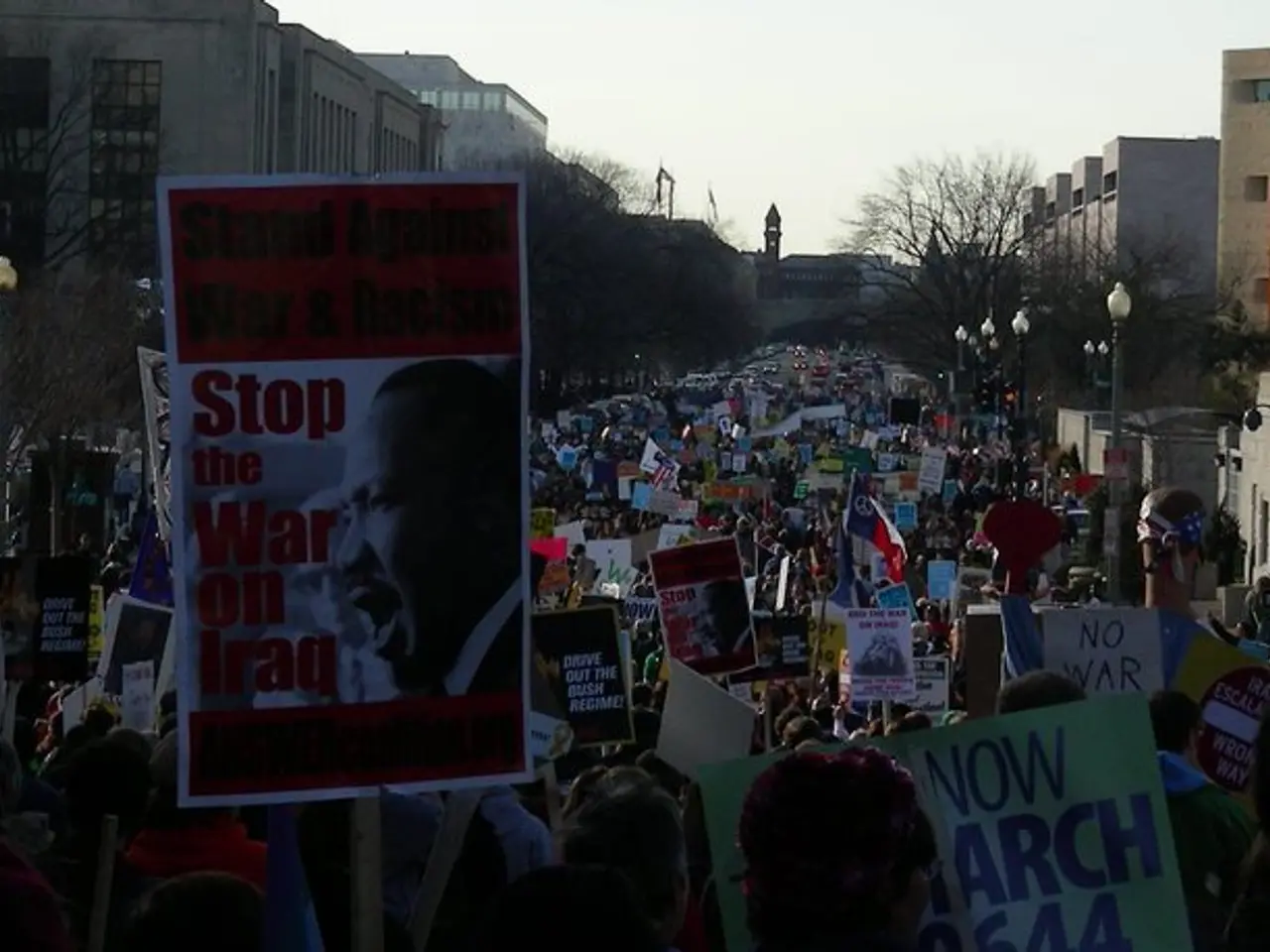Time presses as Trump escalates U.S. tariff increases, broadening the trade conflict
In 2025, Donald Trump's approach to trade tariffs disrupted global economies and trade negotiations, causing significant volatility in global markets. The tariffs, ranging from 10% to 60%, were imposed on various countries and sectors, impacting supply chains, increasing costs, and prompting reshoring and diversification efforts in industries such as manufacturing and technology.
The tariffs have put pressure on supply chains, leading companies like Apple to move a portion of iPhone production out of China to countries like India. However, replicating China’s manufacturing efficiency remains challenging. Emerging markets such as Vietnam have experienced inflationary pressures, especially in commodities like steel, copper, and pharmaceuticals, affecting their export-reliant economies.
On the U.S. domestic economy, the tariffs have raised consumer prices significantly, with apparel and shoe prices increasing by 35-37% in the short term. The tariffs have also negatively impacted GDP growth, reducing U.S. real GDP growth by 0.7 percentage points in 2025 and leading to a persistent GDP decrease of around 0.4% in the long run, equivalent to an annual loss of about $110 billion. They have also increased unemployment by 0.4 percentage points with over half a million fewer jobs by the end of 2025.
While U.S. manufacturing output sees some gains (2% expansion in the long run), these are offset by contractions in other sectors like construction (-3.5%) and agriculture (-0.8%). From a fiscal perspective, the tariffs are projected to raise $2.6 trillion over 2026–2035 but with $408 billion in negative dynamic revenue effects, resulting in net revenues of $2.2 trillion.
Trade negotiations have been volatile and aggressive under Trump’s tariff policies. The administration has imposed tariffs on almost every country, sometimes up to 50%, and has oscillated between imposing new tariffs and announcing negotiation periods with aggressive deadlines aimed at securing "rebalanced" trade deals. This cycle has created uncertainty globally and complicated diplomatic relations, especially with groups like BRICS, which have faced threats of additional tariffs if perceived as opposing U.S. interests.
Notable tariff actions include the delay of the tariff on Brazilian goods from Aug. 1 to Aug. 6, the exemption of many products from the 50% tariff on Brazilian goods, and the signing of an order to impose 50% tariffs on certain copper products. Trump has also vowed to expand his trade wars and has announced a 25% duty on Indian goods, slightly lower than previously threatened. He has inked an order for a 50% tariff to kick in on Aug. 1 on goods like copper pipes and wiring, but the tariff hikes were less sweeping than anticipated, leaving out products like copper ores, concentrates, and cathodes.
Economists warn that higher tariffs can fuel an uptick in inflation and weigh on economic growth. Washington has postponed the implementation of the tariff hikes twice. So far, Britain, Vietnam, Japan, Indonesia, the Philippines, the EU, and South Korea have reached initial deals with Washington. The tariff hikes due on August 1 were set to affect dozens of economies, including the European Union, Japan, and others.
Trump unveiled a 50% tariff on Brazilian goods, citing U.S. national security concerns. He also announced a trade deal with South Korea and separate duties on Brazilian and Indian imports. South Korean products will face a 15% tariff when entering the United States, significantly below the 25% level threatened.
In summary, Trump's 2025 tariff strategy has broadly unsettled global trade, strained emerging and developed economies, disrupted supply chains causing geographic shifts in production, elevated consumer prices, reduced U.S. economic growth, increased unemployment, and complicated global trade negotiations by adopting a confrontational, reactive tariff policy stance.
- The volatility in global markets, caused by Donald Trump's approach to trade tariffs in 2025, is a reflection of the broader unsettled state of global trade that his tariff strategy has created.
- The 2025 tariff policy of Donald Trump, marked by its confrontational and reactive nature, has led to increased consumer prices, reduced US economic growth, and complicated global trade negotiations, thus highlighting the impact of politics on policy-and-legislation and general-news.






